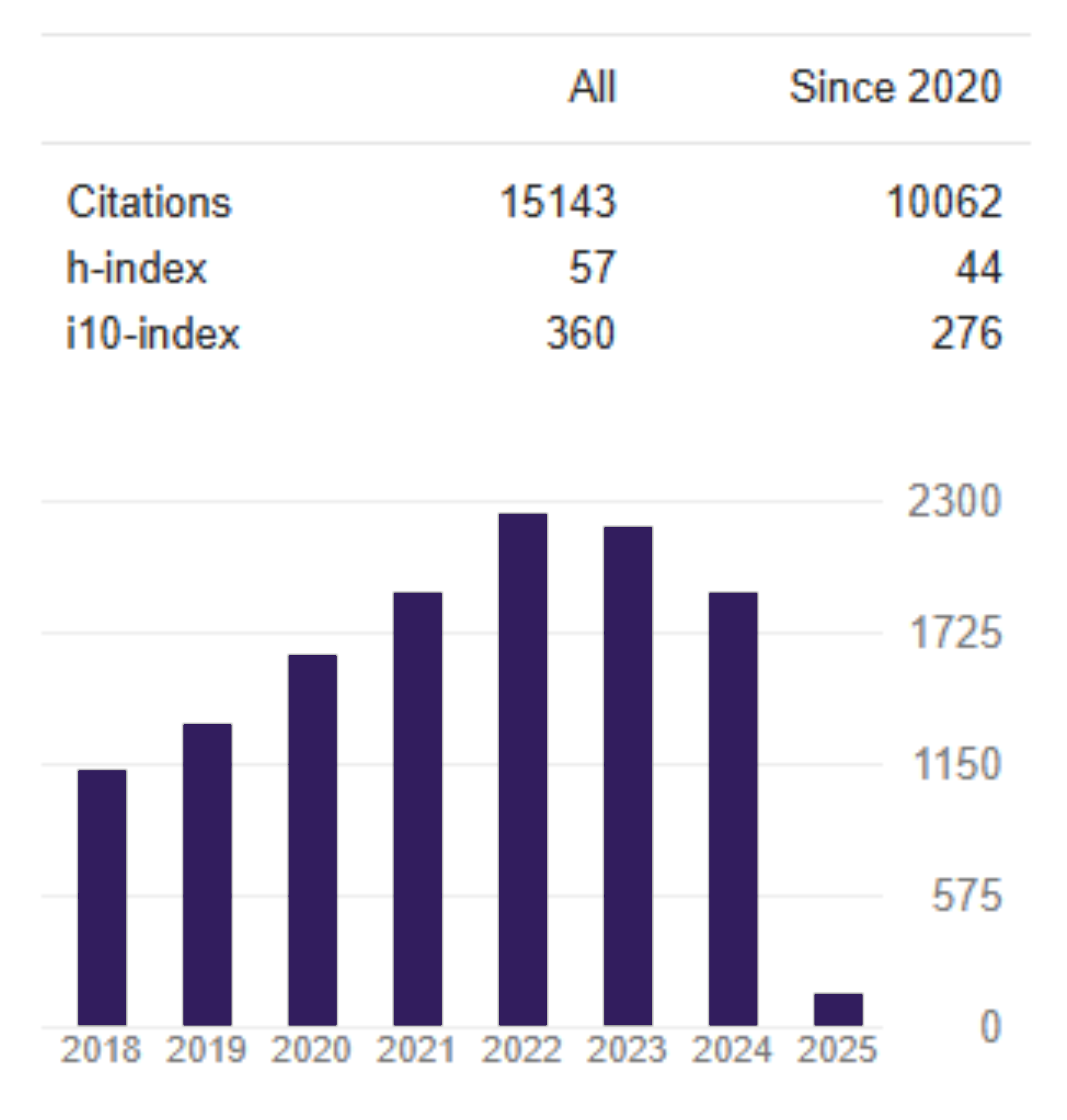APAKAH DIVERSITAS GENDER MEMENGARUHI STRUKTUR MODAL? BUKTI EMPIRIS DI INDONESIA
DOI:
https://doi.org/10.26905/jkdp.v21i2.636Keywords:
gender, capital structure, Indonesia Stock Exchange.Abstract
The purpose of this study is to know the influence of gender diversity that proxied by the existance and proportion of female directors in a firm on capital structure that proxied by debt to asset ratio (DAR) and debt to equity ratio (DER). Sample of this study consists of 78 firms (384 observations) listed on Kompas100 Index between 2011 and 2015. Controlling for firm size, profitability (ROA) and asset growth, the results show that 1)the existance of female on board of directors has positive and significant effect on DAR 2)female proportion on board of directors has no significant effect on DAR 3) the existance of female on board of directors has no significant effect on DER 4)female proportion on board of directors has no significant effect on DER
Downloads
References
Abor, J. & Biekpe, N. 2007. Corporate Governance, Ownership
Structure and Performance of SMEs in
Ghana: Implications for Financing Opportunities.
Corporate Governance, 7(3): 288-300.
Adams, R.B. & Ferreira, D. 2009. Women in the Boardroom
and Their Impact on Governance and Performance.
Journal of Financial Economics, 94(2): 291-
Alvarado, N.R, Briones, J.L., & Ruis, PDF. 2011. Gender
Diversity on Boards of Directors and Business
Success. Investment Management and Financial Innovations,
(1): 199-209.
Bassey, N.E., Akpaeti, A.J., Ikpe, I.K., & Udo, U.J. 2013.
Analysis of the Determinants of Capital Structure:
Evidence from Unlisted Agro-Based Firms in Nigeria
-2010. Agricultural Science, 1(4): 36-47.
Bulan, F. & Yuyetta, E.N.A. 2014. Pengaruh Corporate
Governance terhadap Capital Structure. Diponegoro
Journal of Accounting, 3(2): 1-12.
Campbell, K. & Minguez-Vera, A. 2008. Gender Diversity
in the Boardroom and Firm Financial Performance.
Journal of Business Ethics, 83(3): 435-451.
Chen, Y., Zhang, X., & Liu, Z. 2014. Manager Characteristics
and the Choice of Firm “Low Leverageâ€: Evidence
From China. American Journal of Industrial
and Business Management, 4: 573-584.
Coleman, S. & Robb, A. 2009. A Comparison of New Firm
Financing by Gender: Evidence From the
Kauffman Firm Survey Data. Small Business
Economy, 33: 397-411.
Croson, R. & Gneezy, U. 2009. Gender Differences in Preferences.
Journal of Economic Literature, 47: 448-74.
Domenichelli, O. 2013. The Determinants of Capital Structure
Choice: Evidence from Italian Family Firms.
International Journal of Finance and Accounting, 2(8):
-438.
Faccio, M., Marchica, M.T. & Mura, R. 2016. CEO Gender,
Corporate Risk-Taking, and the Efficiency of Capital
Allocation. Journal of Corporate Finance, 39(8):
-209
Francouer, C., Labelle, R., & Bernard S.D. 2008. Gender
Diversity in Corporate Governance and Top Management.
Journal of Business Ethics, 81: 83–95
Firnanti, F. 2011. Faktor-Faktor yang Memengaruhi
Struktur Modal Perusahaan Manufaktur di Bursa
Efek Indonesia. Jurnal Bisnis dan Akuntansi, 13(2):
-128.
Gul, F.A., Srinidhi, B., & Ng, A.C. 2011. Does Board Gender
Diversity Improve the Informativeness of Stock
Prices? Journal of Accounting & Economics, 51(3):
-338.
Hambrick, D. C. & Mason, P. A. 1984. Upper Echelons:
The Organization as A Reflection of Its Top Managers.
Academy Of Management Review, 9(2), P. 193-
Hardiningsih, P. & Octaviani, R.M. 2012. Determinan
Kebijakan Utang (Dalam Agency Theory dan
Pecking Order Theory). Dinamika Akuntansi
Keuangan dan Perbankan, 1(1): 11-24.
Heminway, J. M. 2007. Sex Trust and Corporate Boards.
Hastings Women’s Law Journal, 18: 173-193.
Huang, J. & Kisgen, D.J. 2013. Gender and Corporate Finance:
Are Male Executives Overconfident Relative
to Female Executives? Journal of Financial Economics,
(3): 822-839.
Jaradat, M. S. 2015. Corporate Governance Practices and
Capital Structure: A Study with Special Reference
to Board Size, Board Gender, Outside Director and
CEO Duality. International Journal of Economics,
Commerce and Management, 3(5): 264-273.
Lakhal, F., Aguir, A., Lakhal, N., & Malek, A. 2015. Do
Women on Board and in Top Management Reduce
Earning Management? Evidence in France.
Journal of Applied Business Research, 31(3): 1107-
Loukil, N. & Yousfi, O. 2016. Does Gender Diversity on
Corporate Boards Increase Risk-Taking? Canadian
Journal of Administrative Sciences, 33(1): 66-81.
Margaretha, F. & Asmariani, A. 2009. Faktor-Faktor
Agency Theory yang Memengaruhi Utang. Media
Riset Bisnis & Manajemen, 9(1): 1-20.
Muravyev, A., Talavera, O., & Schäfer, D. 2009. Entrepreneurs’
Gender and Financial Constraints: Evidence
From International Data.Journal of Comparative
Economics, 37(2): 270-286.
Orser, B.J, Riding, A.L., & Manley, K. 2006. Women
Entrpreneurs and Financial Capital. Entrepreneurship
Theory and Practices, 30(5): 643-665.
Ramadhani, Z.I. & Adhariani, D. 2017. Semakin Beragam
Semakin Baik? Isu Keberagaman Gender,
Keuangan, dan Investasi Perusahaan. Jurnal
Keuangan dan Perbankan, 21(1): 1-13.
Ruigrok, W., Peck, S., & Tacheva, S. 2007. Nationality
and Gender Diversity on Swiss Corporate Boards.
Corporate Governance, 15(4): 546-557.
Sari, N.P.A.P. 2014. Faktor-Faktor yang Memengaruhi
Struktur Modal pada Perusahaan Non Keuangan
yang Terdaftar di Bursa Efek Indonesia Tahun
-2012. E-Jurnal Akuntansi Universitas Udayana,
(1): 33-47.
Sena, V., Scott, J., & Roper, S. 2012. Gender, Borrowing
Patterns and Self-Employment: Some Evidence for
England. Small Business Economics, 38: 467-480.
Smith, N., Smith, V., & Verner. M. 2006. Do Women in
Top Management Affect Firm Performance? A
Panel Study Of 2500 Danish Firms. International
Journal of Productivity and Performance Management,
(7): 569-593.
Apakah Diversitas Gender Memengaruhi Struktur Modal? Bukti Empiris di Indonesia
Suherman
| 227 |
Ting, I.W.K., Azizan, N.A.B., & Kweh, Q.L. 2014. Human
Governance And Firm’s Leverage Decisiom: Evidence
From Malaysian Listed Companies.
Pertanika Journal, 22(3): 879-890.
Ting, I.W.K., Azizan, N.A.B., & Kweh, Q.L. 2015. Upper
Echelon Theory Revisited: The Relationship Between
CEO Personal Characteristics and Financial
Leverage Decision.Procediasocial and Behavioral
Sciences, 195: 686-694.
Zabri, S.M. 2012. Study of Financing Preferences and
Capital Structure among Malaysian SMEs: Evidence
From Enterprise 50 Award Winners.
Proceedingsasean Entrepreneurship Conference: 131-
Ze-Jiang, Z. & Zong-Feng, X. 2015. Female Executives,
Macroeconomic Environment and Cash Holding.
Economic Survey, 31(4): 121-125.
Zeng, S. & Wang, L. 2015. CEO Gender and Corporate
Cash Holdings. Are Female Ceos More Conservative?
Asia-Pacific Journal of Accounting And Economics,
(4): 449-474.
Downloads
Published
Issue
Section
License

This work is licensed under a Creative Commons Attribution-ShareAlike 4.0 International License.



